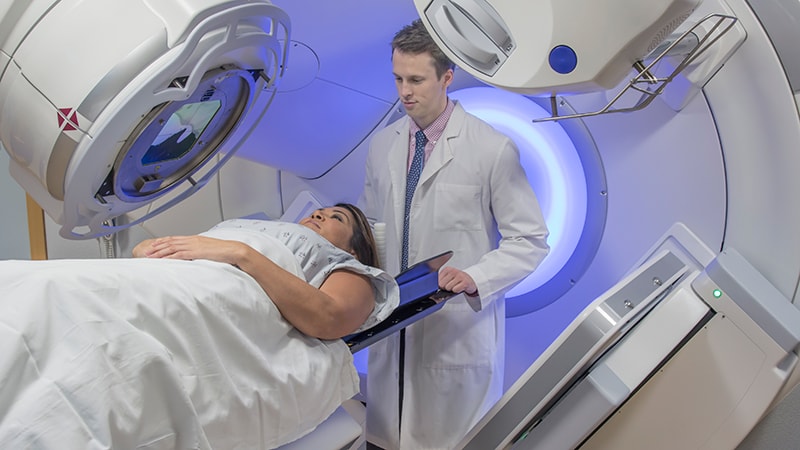TOPLINE:
Individualized stereotactic ablative radiotherapy (SABR) based on lung tumor volume, location, and histology yielded high local control and low toxic effects, according to findings from a phase 2 study.
METHODOLOGY:
-
SABR is commonly used to treat lung tumors but can come with severe toxicities.
-
Researchers conducted a single-arm, nonrandomized phase 2 trial, involving 217 unique patients with 285 lung tumors, at an academic center in the United States and one in Japan, to assess whether individualizing lung SABR dose provides good local control and fewer toxicities.
-
Patients were enrolled in three groups according to cancer type: initial diagnosis of T1-3N0M0 non-small cell lung cancer (group 1); T1-3N0M0 new primary NSCLC with a history of prior NSCLC or multiple NSCLCs (group 2); lung metastases from NSCLC or another solid tumor (group 3).
-
SABR dose and fractionation were customized by tumor size, location, and history. Doses ranged from 25 Gy in 1 fraction for peripheral tumors with a volume of 0 to 10 cm3 to 60 Gy in 8 fractions for central tumors with a volume greater than 30 cm3.
-
The primary outcome was freedom from local recurrence at 1 year; secondary outcomes were toxicity and survival.
TAKEAWAY:
-
The most common dose was 25 Gy in 1 fraction (158 of 285 tumors). The median follow-up was 33 months and median overall survival was 59 months.
-
Freedom from local recurrence at 1 year was 97% in group 1, 94% in group 2, and 96% in group 3. Freedom from local recurrence at 5 years was about 83% in group 1, nearly 93% in group 2, and approximately 91% in group 3.
-
The proportion of patients with grade 3 to 5 toxic effects was low, at 5%, with one possible treatment-related grade 5 event.
IN PRACTICE:
Individualized SABR for lung tumors can help minimize treatment dose and “may be associated with excellent tumor control,” the study authors conclude. Editorialist Vivek Verma, MD, from the University of Texas MD Anderson Cancer Center, writes that this research “should set the stage for individualized lung SABR approaches going forward.”
SOURCE:
The study, led by Michael Gensheimer, MD, from Stanford University, California, was published online September 14 in JAMA Oncology, as was the accompanying editorial.
LIMITATIONS:
This nonrandomized, single-arm study lacked a uniform dosing control arm. The primary outcome was 1-year local recurrence and many local recurrences in SABR-treated NSCLC can occur later.
DISCLOSURES:
Support for the study was provided by the Department of Radiation Oncology, Stanford University School of Medicine, and by the Global Center for Biomedical Science and Engineering, Hokkaido University Faculty of Medicine. The study authors reported grant funding, personal fees, and ownership interests from multiple pharmaceutical and device companies.
For more from Medscape Oncology, join us on X (formerly Twitter) and Facebook
Source: Read Full Article
